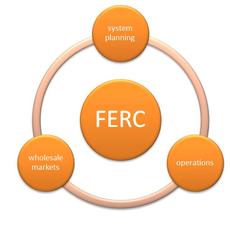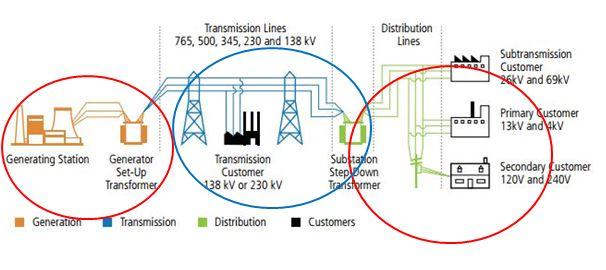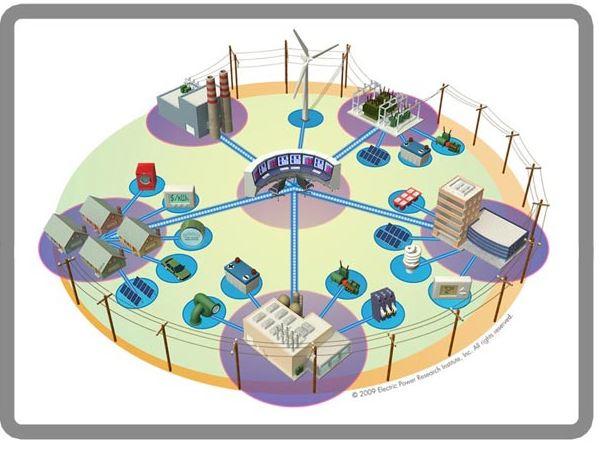This series will focus on these questions in the area of transmission planning (regional load forecasting and solutions to identified grid needs), wholesale market design, and facilitation of utility business model reform.
Allison Clements | NRDC
Technology and policy advances, together with customer interest in at least some control over their energy use, have led to an explosion of Distributed (or local) Energy Resources interconnecting with the nation’s electric grid. These so-called “DERs”—including energy efficiency, demand response, rooftop solar generation, electric vehicles, other storage and smart grid hardware and software—have the potential to play a pivotal role in achieving a truly modern electric grid; that is, a resilient, flexible, and reliable system capable of supporting carbon pollution reduction goals and driving our clean energy economy. But the policies governing them have to keep up.
Much of the DER-related policy conversation (by industry, state and federal regulators and other stakeholders) has focused on their potential to contribute to utility business model reform and related distribution-level regulations. But the impacts of DERs on the electric system don’t stop at utility service territory or even state borders. Whether connected to your thermostat, on your roof, in your garage, or in your community, DERs, added together, have significant potential to impact and enhance transmission system operations.
The relationship between DERs and the federally-regulated transmission grid has become increasingly important in the quest to fight climate change while providing affordable and reliable electric service. In order to unleash DERs’ full potential on the transmission side, the policies that impact these resources’ interactions with the transmission system must be considered, reformed and in some cases invented to recognize the realities and potential of a modern grid.
This Small Power, Big Grid blog series considers the interactions between DERs and the transmission system and identifies a series of areas in which policy reform can contribute to exponential growth in DER value to the entire distribution and transmission system.
The Federally Regulated Transmission System: A Quick Primer
Before diving into the increasingly intertwined relationship between DERs and the transmission system, it’s worth doing a quick review of the two parts of the electric system: one supported by the “transmission grid” that moves electricity across state lines and is regulated by the Federal Energy Regulatory Commission (FERC), and the other supported by the “distribution grid,” which is regulated by each state within its borders. Some people also refer to the transmission grid as the “bulk power system” (which here can be considered mostly synonymous with the transmission grid).
In addition to the poles and wires that line highways or link homes and businesses to the local utility, the distribution and transmission grids are full systems connecting power plants and buildings with substations, poles and wires, and, increasingly, an interconnected web of empowered customers, smart technology, local solar generation, and electric cars. These resources hold great potential to modernize the grid—but have engendered significant confusion on the policy front by making it more difficult to discern any jurisdictional cutoff point between the two parts of the electric system (i.e., transmission and distribution) and their regulations.
Congress in 1935 passed the Federal Power Act to address states’ inability to regulate interstate sales of electricity. It gives FERC authority over, among other things, transmission service in interstate commerce and wholesale sales of electricity (sales from power plants to wholesale customers like utilities) but leaves transmission line need and siting determinations, as well as authority over retail sales (from the utilities to end-use customers) and the generation mix, to the states.
FERC is an independent federal agency charged with protecting the public interest by ensuring “just and reasonable rates” and avoiding “undue discrimination.” While its governing statute has no specific environmental mandate, FERC has the authority to consider the social cost of carbon and other environmental costs (for example, complying with environmental rules), which undoubtedly come into play when regulating the electric grid. In general, FERC decisions have significant implications for environmental and energy policy, and vice versa.

Categories of FERC's Electric Grid Regulatory Authority
FERC’s electric system authority can be oversimplified into three categories: wholesale markets, transmission system planning, and operations (dispatch, interconnection, integration). FERC’s obligation to maintain reliability and ensure fair prices flows throughout each of these areas.
For the first 70 or so years of the Federal Power Act, FERC, the states, and regulated utilities hummed along nicely with the occasional jurisdictional bump in the road but general clarity around what activities the states should regulate and what activities fell within FERC’s domain. But over the last 10 years, the technology developments (namely, DERs), together with interested and empowered customers, that increased the grid’s interconnectedness have outpaced corresponding changes in law and policy by a wide margin, resulting in jurisdictional ambiguities, policy mismatches, and an inability to maximize the potential value of technological change.

This picture from U.S. DOE’s 2015 Quadrennial Energy Review demonstrates a traditional take on the division of jurisdiction between states and the federal government. Red = states, blue = FERC.
http://energy.gov/sites/prod/files/2015/04/f22/QER%20ch3%20final_0.pdf

Energy efficiency, demand response, rooftop solar and other distributed resources are evolving the grid to an interconnected ecosystem (hopefully, sooner than later, without the presence of polluting fossil fueled generation!)
http://smartgrid.epri.com/Demo.aspx
With the rapid proliferation of DERs, it is worth considering the various ways in which these resources interact with the FERC-jurisdictional transmission grid and the policy implications. Recent Supreme Court decisions, EPSA v. FERC and Hughes v. Talen Energy Marketing, demonstrate some legal growing pains around drawing the line between state and federal authority over the electric grid, but also provide early guideposts for how the cooperative arrangement the Federal Power Act envisioned between the states and federal government can continue to work. Important questions remain—and resolving them will affect whether our electric grid can achieve a clean, affordable and reliable electric future.
This series will focus on these questions in the area of transmission planning (regional load forecasting and solutions to identified grid needs), wholesale market design, and facilitation of utility business model reform.
Continue to Part 2
The content & opinions in this article are the author’s and do not necessarily represent the views of AltEnergyMag
Comments (0)
This post does not have any comments. Be the first to leave a comment below.
Featured Product


